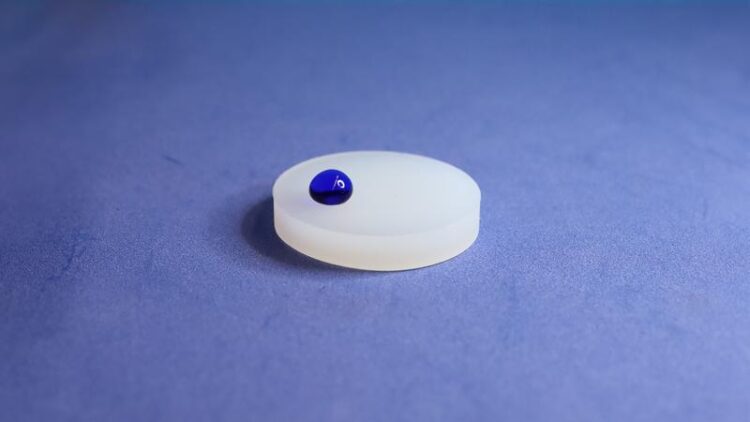Environmentally friendly alternative to PFAS-based coatings

A plastic substrate has been treated with the new INP plasma process and is now water-repellent. A promising and environmentally friendly alternative to PFAS-based coatings.
(c) INP
The Leibniz Institute for Plasma Science and Technology (INP) in Greifswald, Germany has developed a new method for the production of ultra-hydrophobic organosilicon polymer coatings. These coatings are an alternative to per- and polyfluorinated compounds (PFAS), which are still used in many industrial applications and sectors.
PFAS compounds have been used for decades to enhance a wide range of products, including those in the medical, semiconductor and textile industries. They are extremely water-repellent and therefore have a number of advantages, such as good non-stick properties and high chemical resistance. However, due to their high stability, PFAS compounds can accumulate in the environment and in living organisms, which is why they are also known as “eternal chemicals”. They are therefore considered harmful to the environment and human health and have been banned in some applications in the EU since 2006.

For comparison: a plastic substrate that has not been treated and is therefore not water-repellent. (c) INP
All perfluorinated and polyfluorinated compounds are expected to be included in the global ban list of the Stockholm Convention by 2025 at the latest. This poses an enormous challenge to future high-tech industries such as medical and semiconductor, which rely on these established ultra-hydrophobic coatings.
The organosilicon polymer coating recently developed by INP is based on plasma technology and is a promising and environmentally friendly alternative to PFAS-containing coatings. It is mechanically and chemically stable, up to 200 nm thick and opaque, storable, washable and reproducible. The coatings can be applied to many materials, including metals, plastics and semiconductors.
These properties, together with the fact that they can be applied to thermolabile plastics, make organosilicon polymer coatings ideal for medical device finishing. For example, it can be used in the manufacture or surface modification of implantable devices such as pacemakers or artificial joints.
The INP is currently working on transferring the low-pressure process for depositing the organosilicon polymer layer to a normal pressure process. Concepts for scaling up the technology are also being developed.
“We are very pleased with the results of our research,” says Dr Frank Hempel, Head of the Plasma Surface Technology Department at INP. “The organosilicon polymer layer is a promising alternative to PFAS-containing layers and offers a wide range of possibilities for applications in various industrial sectors.”
Media Contact
All latest news from the category: Materials Sciences
Materials management deals with the research, development, manufacturing and processing of raw and industrial materials. Key aspects here are biological and medical issues, which play an increasingly important role in this field.
innovations-report offers in-depth articles related to the development and application of materials and the structure and properties of new materials.
Newest articles

First-of-its-kind study uses remote sensing to monitor plastic debris in rivers and lakes
Remote sensing creates a cost-effective solution to monitoring plastic pollution. A first-of-its-kind study from researchers at the University of Minnesota Twin Cities shows how remote sensing can help monitor and…

Laser-based artificial neuron mimics nerve cell functions at lightning speed
With a processing speed a billion times faster than nature, chip-based laser neuron could help advance AI tasks such as pattern recognition and sequence prediction. Researchers have developed a laser-based…

Optimising the processing of plastic waste
Just one look in the yellow bin reveals a colourful jumble of different types of plastic. However, the purer and more uniform plastic waste is, the easier it is to…



